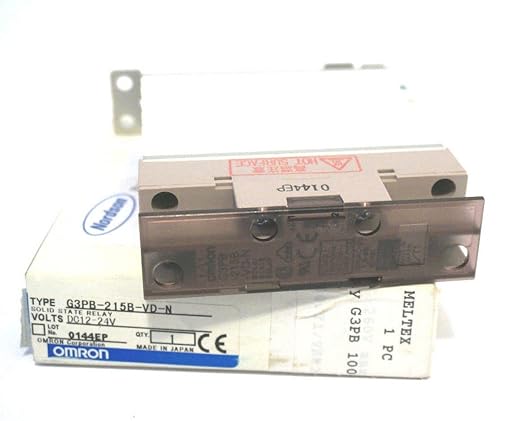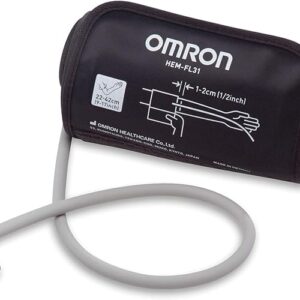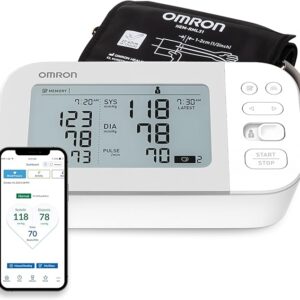Description
Omron Relay G3PB-215B-VD-N – Q&A
The Omron G3PB-215B-VD-N is a Solid-State Relay (SSR) designed for industrial automation applications. It provides reliable switching with no moving parts, offering advantages over mechanical relays, especially in demanding environments. The relay is commonly used in applications such as controlling high-power devices, machinery, and heating systems. Below is a breakdown of the pros and cons of the Omron G3PB-215B-VD-N relay.
Q1: What are the main advantages of the Omron G3PB-215B-VD-N Relay?
Pros:
- Durability and Longevity:
- Solid-State Relays (SSRs) like the G3PB-215B-VD-N have no moving parts, resulting in a longer operational life compared to mechanical relays. This eliminates wear and tear and ensures greater reliability over time. The Omron G3PB-215B-VD-N can handle millions of switching cycles without degradation.
- Fast Switching Speed:
- The G3PB-215B-VD-N has a fast switching speed, which is essential in applications that require rapid on/off control. This is ideal for automation and control circuits where high-speed switching is critical to system performance.
- Compact Design:
- The G3PB-215B-VD-N is relatively compact, making it easier to install in space-constrained areas. Its small size is a big advantage in systems where multiple relays need to be integrated, and there is limited room for larger mechanical components.
- Noise Immunity:
- The Omron G3PB-215B-VD-N offers excellent immunity to electrical noise, which is especially beneficial in industrial environments with high levels of electromagnetic interference (EMI). This makes the relay more stable and reliable compared to traditional mechanical relays.
- High Load Capacity:
- This relay is capable of handling relatively high power loads (up to 15A at 240V AC), making it suitable for controlling power-hungry devices like heating elements, motors, and other high-current applications.
- Low Power Consumption:
- The G3PB-215B-VD-N consumes very low control power, making it energy-efficient. This can reduce the overall power consumption in automation systems and contribute to energy savings.
- Minimal Heat Generation:
- Unlike mechanical relays that generate more heat during operation, the G3PB-215B-VD-N produces significantly less heat, making it more thermally efficient. This reduces the need for external heat management systems like fans or heat sinks.
- Long Service Life:
- Due to its solid-state nature, the G3PB-215B-VD-N is not susceptible to contact corrosion or arc damage that can occur in mechanical relays. This gives it a longer operational life, especially in environments where relays frequently cycle on and off.
- Overload Protection:
- The G3PB-215B-VD-N has built-in overload protection features, helping prevent damage to the relay in case of overcurrent conditions. This ensures the longevity of the relay and the safety of the system.
- Vibration Resistance:
- The G3PB-215B-VD-N is resistant to vibrations, making it ideal for use in environments with heavy machinery or transportation systems. This feature reduces the risk of relay failure in industries like automotive and manufacturing.
Q2: What are the potential drawbacks or limitations of the Omron G3PB-215B-VD-N Relay?
Cons:
- Higher Initial Cost:
- Solid-State Relays tend to have a higher upfront cost compared to mechanical relays. While the G3PB-215B-VD-N offers many benefits in terms of reliability and speed, the initial investment can be a consideration, especially for budget-conscious companies.
- Heat Accumulation:
- Even though solid-state relays produce less heat than mechanical relays, under high-load conditions, they can still generate heat. If not properly managed, this can lead to overheating and reduced lifespan. It’s important to ensure adequate ventilation or use of heat sinks in such cases.
- Limited to AC Applications:
- The Omron G3PB-215B-VD-N is designed primarily for AC applications. For DC applications, other types of solid-state relays or components may be needed, limiting its versatility.
- Leakage Current:
- Solid-state relays like the G3PB-215B-VD-N can exhibit small leakage currents even when in the “off” state. This can be problematic in certain sensitive applications where even a small current could affect the system or cause unwanted behavior.
- Complex Troubleshooting:
- Troubleshooting solid-state relays can be more difficult than mechanical relays, especially when failures are related to internal components like semiconductors. Specialized diagnostic tools may be required to identify problems accurately.
- Not Suitable for Very High Switching Frequencies:
- The G3PB-215B-VD-N relay is suitable for general industrial use but may not be ideal for applications that require extremely high switching frequencies (e.g., kHz or MHz ranges). For very high-speed switching, specialized relays might be necessary.
- Vulnerability to Overvoltage Conditions:
- Like many solid-state relays, the G3PB-215B-VD-N can be vulnerable to overvoltage conditions. If the voltage exceeds the specified limits, it can permanently damage the internal components. Additional protection circuits, such as surge protectors, may be necessary in certain applications.
- Limited Fault Tolerance:
- Solid-state relays can fail in a shorted-on or open-off state, meaning that if the relay fails, the system may remain in a permanent “on” or “off” condition. This could lead to safety concerns or unintended system behavior.
Q3: How does the Omron G3PB-215B-VD-N compare to other solid-state relays in the market?
Comparison:
- Omron G3PB-215B-VD-N vs. Crydom D1D50:
- Crydom is a major competitor to Omron in the SSR market. Crydom D1D50 has similar features to the G3PB-215B-VD-N, such as high load capacity and fast switching. However, Omron’s G3PB is often seen as more energy-efficient and suitable for industrial automation systems with a need for longer operational cycles.
- Omron G3PB-215B-VD-N vs. Siemens 3RA:
- Siemens 3RA series relays are another competitive option, providing similar performance for AC load applications. While the G3PB-215B-VD-N is typically considered more cost-effective, the Siemens 3RA series offers better heat dissipation capabilities and extra protection for heavy-duty systems. The G3PB-215B-VD-N is better suited for small to medium industrial applications where cost and size are important factors.
- Omron G3PB-215B-VD-N vs. Carlo Gavazzi RSGD:
- Carlo Gavazzi RSGD relays offer similar features like the Omron G3PB-215B-VD-N, including solid-state technology and high load handling. However, Carlo Gavazzi offers a more wide range of applications, including specialty industrial sectors. The G3PB-215B-VD-N tends to be more compact and is favored for general industrial use, while Carlo Gavazzi is better for specific, customized solutions.
Q4: What are some common applications for the Omron G3PB-215B-VD-N Solid-State Relay?
Common Applications:
- Industrial Automation:
- The G3PB-215B-VD-N is widely used in automation systems, controlling motors, heating elements, lights, and other industrial loads in assembly lines and control systems.
- HVAC Systems:
- Used in heating, ventilation, and air conditioning systems, the G3PB-215B-VD-N helps manage the power to key components like electric heaters and compressors.
- Process Control:
- In process control industries, this relay is used to control various pieces of equipment, including pumps, conveyors, and valves, ensuring smooth operation with minimal downtime.
- Food Processing:
- Solid-state relays like the G3PB-215B-VD-N are ideal for food processing applications, where precise temperature and speed




Reviews
There are no reviews yet.